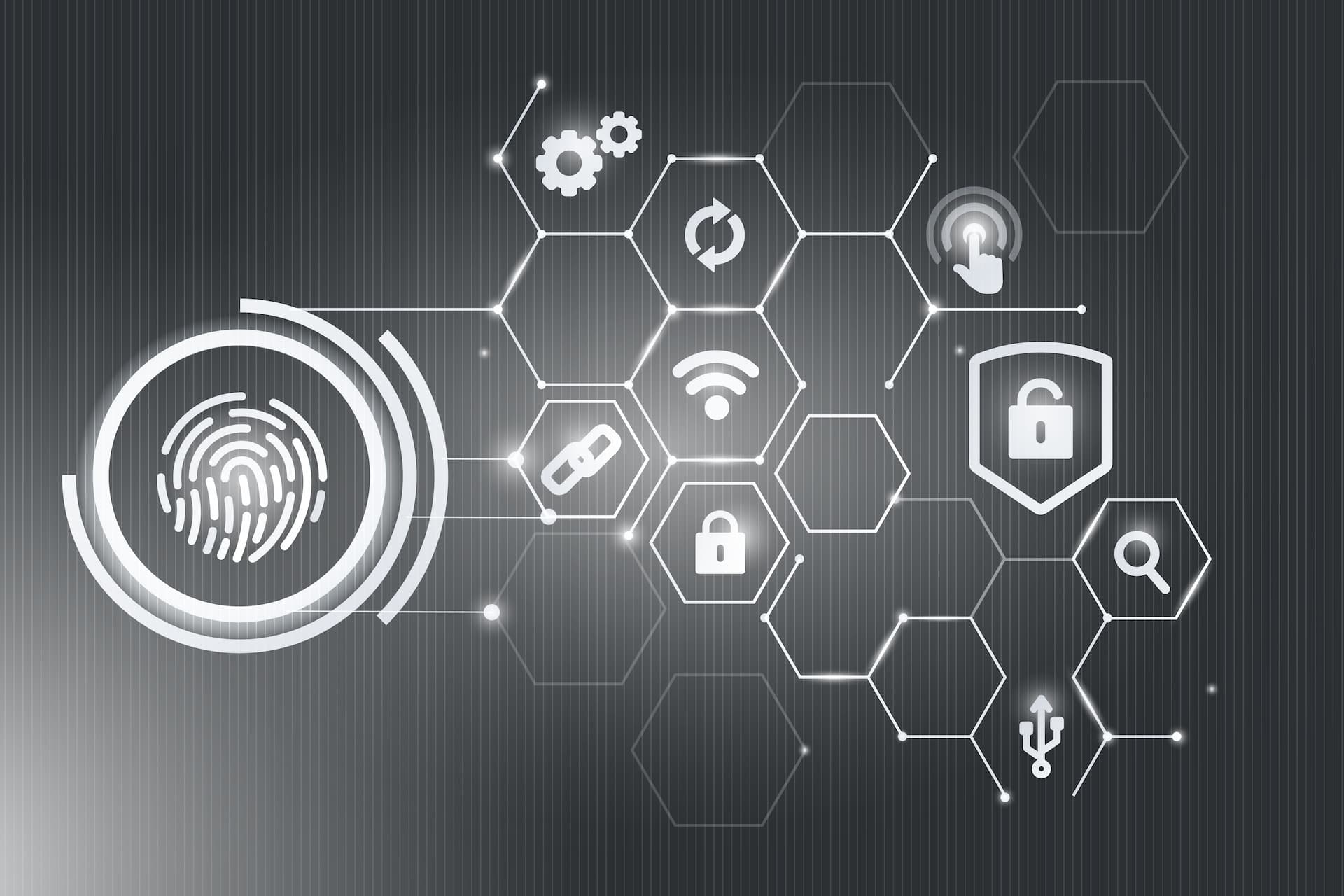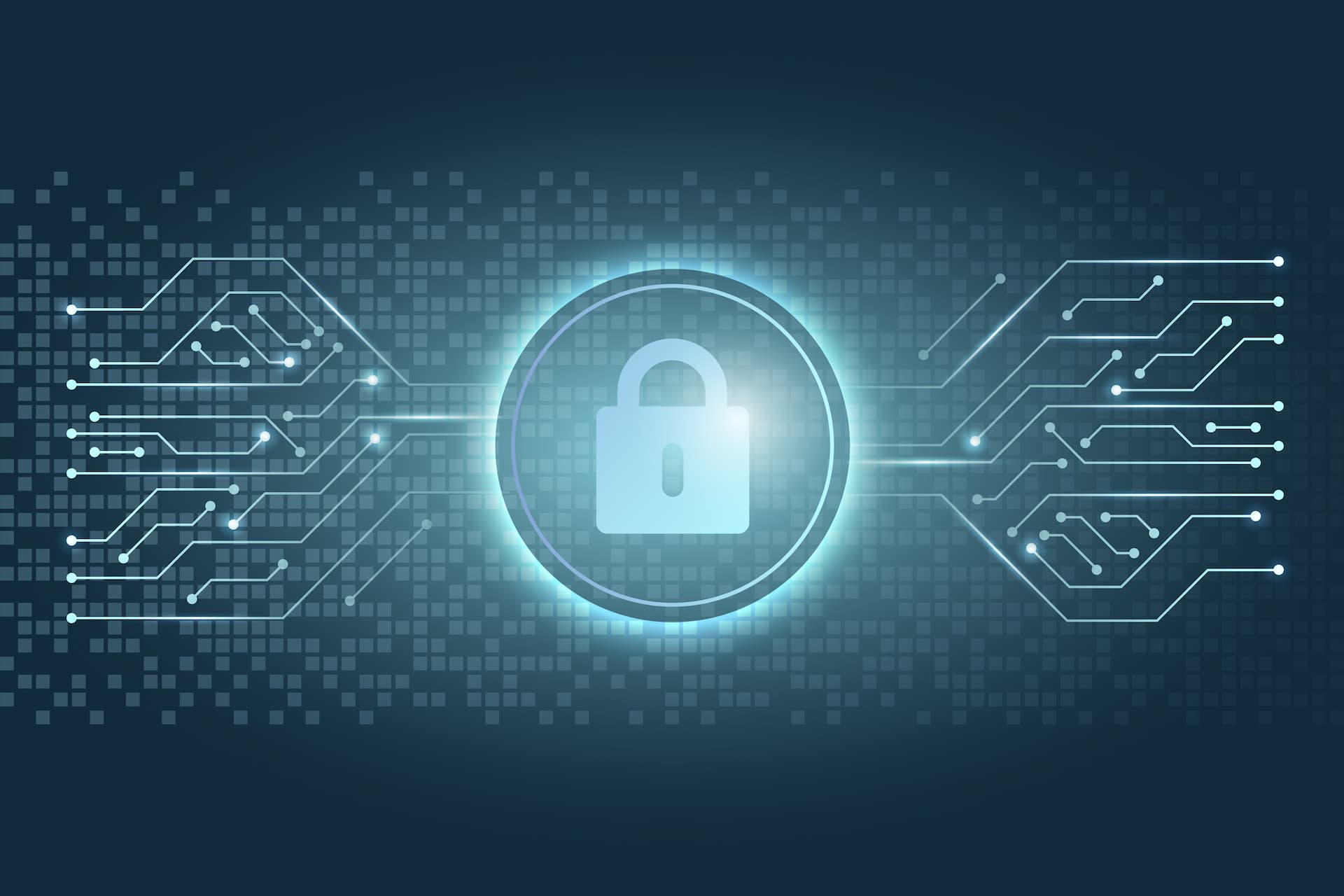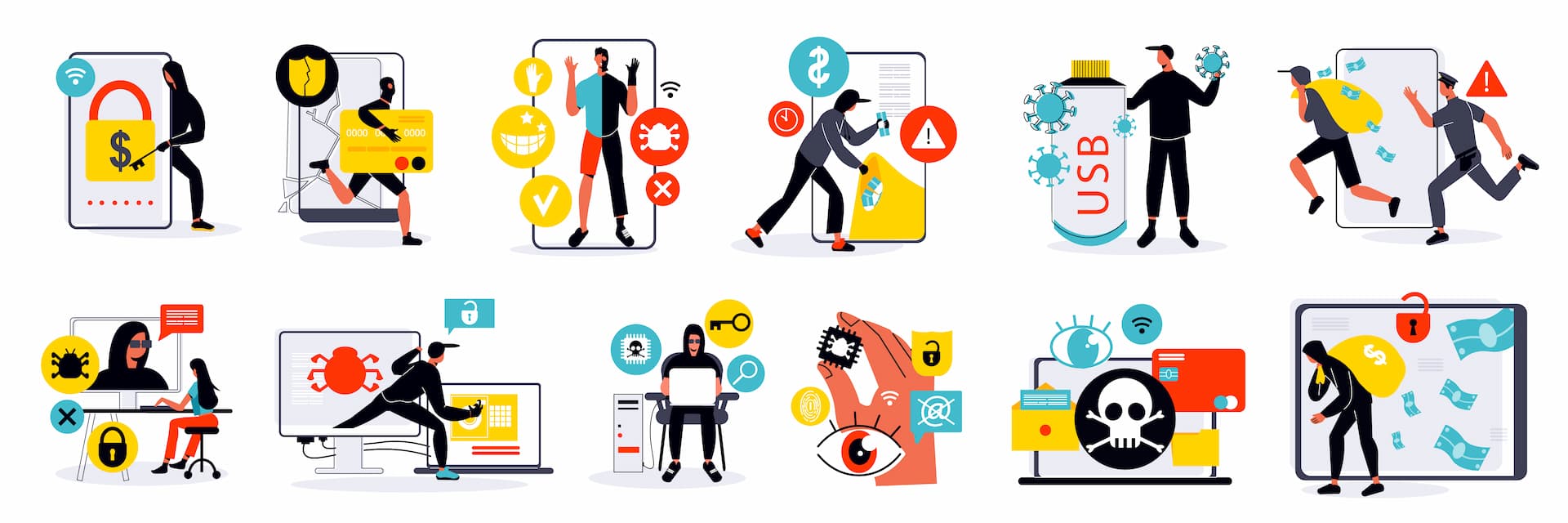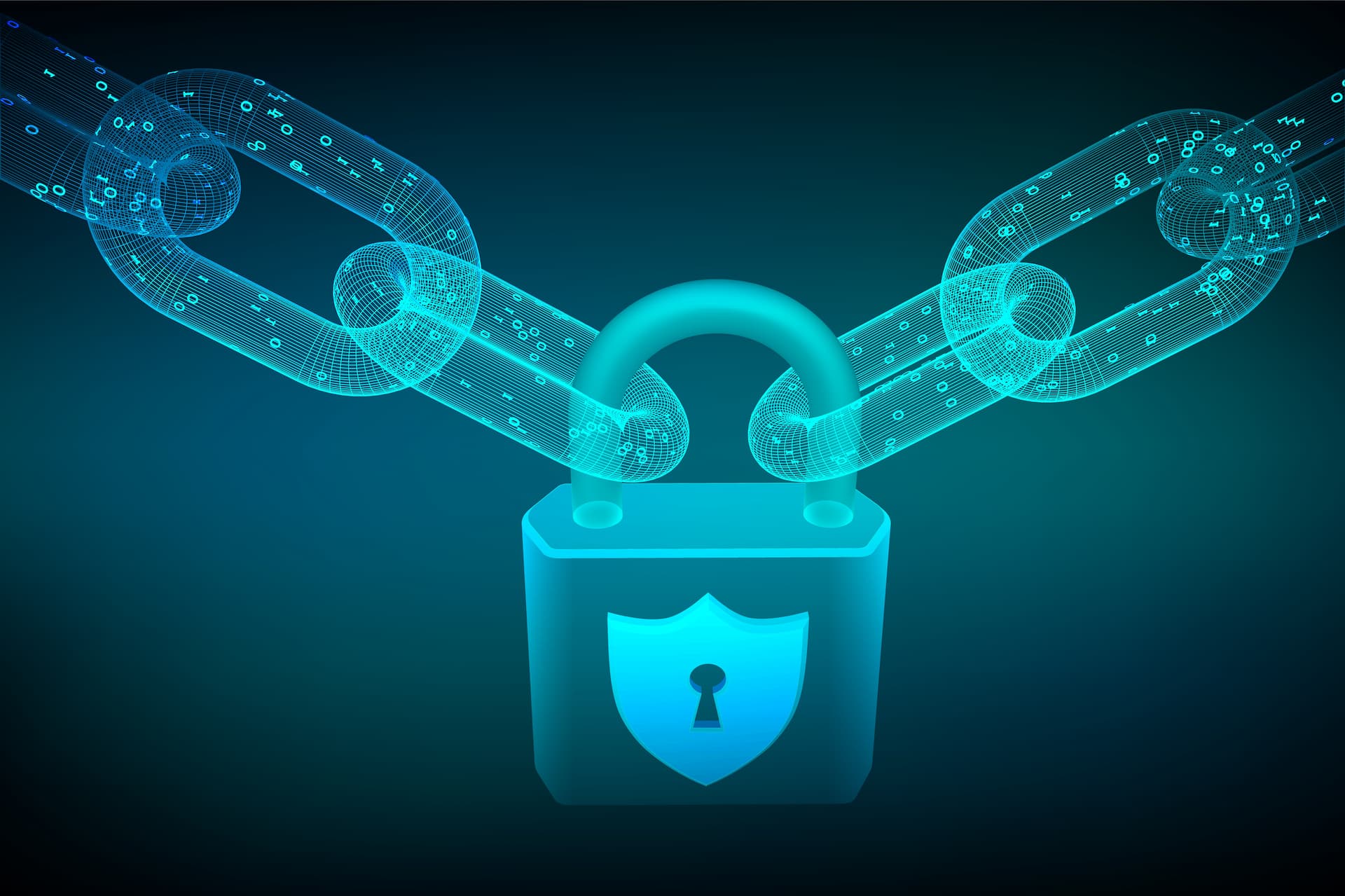Cybercrime is on the rise. In the fiscal year 2020-21, a cyberattack occurred on average every 8 minutes.
COVID-themed attacks were common as cybercriminals sought to exploit people’s desire for digitally accessible information or services. The scams also focused on seasonal occasions such as Christmas and the tax season.
Nearly 50% of small businesses report having been affected by a cyberattack. These include malware, phishing, data breaches, denial of service, and ransomware.
Therefore, preventive and protective measures are critical when formulating an effective cyber security policy. This can be daunting for smaller businesses that do not yet have a cyber security strategy in place. Most importantly, they may not know where to start protecting themselves. But it’s not that difficult.
This blog article explains some of the most common aspects of cyber security issues small businesses can face, and some of the critical actions you can take now to protect your business.

What’s A Cyber Attack?
We can define a cyber attack as an intentional act in cyberspace that manipulates, disrupts, denies, impairs, or destroys computers, networks, or the information stored on them.
When Do Cyber Attacks Take Place?
Cybercriminals are constantly on the lookout for vulnerabilities in websites, computing devices and software to steal data, identity, or money. A cyber attack can happen at any time, but the more you do to protect your networks, the less likely you are to become a victim.
Cybercriminals use natural disasters or crises (e.g., COVID-19 pandemic), seasonal events (Christmas), and tax season to spread thematic scams. So pay special attention to messages you receive during these periods, as they may not be genuine.
Most Common Cyber Threats for Small Businesses
If you want to protect your small business from typical cyber attacks, you should familiarise yourself with the following threats, as they can cause serious damage to your reputation.
#1 Malware
Malware is harmful or malicious software such as viruses, spyware, trojans, and worms. Malware can gain access to critical information such as passwords or credit card numbers. It can also spy on or take control of a user’s computer.
Malware is often spread via phishing emails, remote access, or by exploiting applications or software vulnerabilities.
To protect yourself from these threats, you can:
- Update your operating systems and software automatically
- Back up your data frequently
- Train your employees to recognise suspicious links and attachments
- Regularly check and back up your network and devices, including servers

#2 Ransomware
Ransomware is malware that encrypts or locks your files so you can no longer use or access them. Ransomware is one of the most potent threats that make developing effective cyber security policies even more necessary.
Cybercriminals use ransomware and demand payment to restore access to files or to prevent data from being leaked or sold online. They usually request payment using untraceable cryptocurrencies such as Bitcoin. Ransomware is low-risk, lucrative, and easy to develop and spread. Ransomware packages are also available on the “dark web,” which cybercriminals can easily deploy.
Although ransomware represents a relatively small portion of overall cybercrime, it remains a significant threat due to its high financial and disruptive impact on victims and the general public.
#3 Phishing Messages
Phishing messages are scams that make it appear as if they come from people or organisations you think you know or should trust.
#4 Business Email Compromise (BEC)
In BEC, cybercriminals send fraudulent emails posing as an actual business contact or employee. In such emails, they may inform about a change in bank account details for salaries (if they pose as employees) or future invoice payments (if they pose as suppliers). And sometimes they request goods as well.
These fraudulent emails may come from a hacked email account or use website names or email addresses similar to the real ones. Usually, they swap letters or add more characters – if you don’t pay enough attention to such details, you’ll quickly fall into their traps.
Protect yourself from BEC: You can take these simple but effective steps to protect your business from such scams.
- Verify payment details: for example, call the sender at their known phone number.
- Raise employee awareness: make sure your employees are trained to recognise suspicious emails, such as requests to change bank account details. Watch out for emails linking to fake websites, as they may try intercepting passwords.
- Secure email accounts: Use multi-factor authentication, and if this is not possible, use a robust and unique passphrase for email accounts to prevent unauthorised access.
8 Tips for An Effective Cyber Security Policy
Below are some valuable tips to keep in mind when protecting yourself from cyber attacks:
#1 Update Your Operating System & Software
Like thieves trying to break into a house, cybercriminals always look for the easiest way in. If your software isn’t up to date, it’s like leaving a window unlocked. When you update your software, you’re closing any loopholes cyber criminals could use to get inside.
Enable automatic updates, so you’re always using the most secure versions.
You can find numerous guides on the Internet if you are unsure how to set up automatic updates.

#2 Identify Important Information
The motive of cybercrimes isn’t always to obtain profitable information like credit card details; they may also target information that is valuable to the target company. The first step in developing an effective cyber security policy is to identify the information in your organisation that could be attractive to malicious actors.
This information includes customer and employee data such as Social Security numbers, medical records, contact information, and financial data. You should also pay attention to corporate data that is vital to the operation of your business, such as billing information, product specifications, and operational information.
#3 Consider Possible Worst-Case Scenarios
The “what if” game sounds more like a recipe for fear, but it is also necessary to consider all possible scenarios to ward them off. Examples of questions that can be explored include:
- What happens if your company’s or your customer’s data is stolen?
- What if your company had to stop operations for about ten days?
- What if the information you work with every day was encrypted?
- Could your company be the entry point for an attack on one of your customers?
- Could one of your employees be a gateway for an attack?
#4 Define Your Reactions
Once you have a list of worst-case scenarios, consider how your organisation will respond to each of them and what security precautions you have taken (or should take) before an attack. This means having backups of critical information, using a trusted IT service, and ensuring you have a cyber insurance policy and know how to use it.
#5 Create Clear Policies for Your Employees
Careless people are the Achilles’ heel and the main entry point for cyber attacks. Therefore, employees need to be trained on good cyber hygiene practices to avoid creating a vulnerability in your organisation.
They should know how to securely store customer and business data, recognise phishing attempts, and create strong passwords – especially those employees with administrative privileges.
#6 Find Monitoring Alternatives
The cyber world is constantly changing as malicious actors find or invent new ways to attack organisations. Therefore, it is crucial to be aware of these recent trends to keep your organisation vigilant and protected. Establishing a dedicated internal IT team, using detection software, and even hiring an external IT consulting team can protect your assets.

#7 Enable MFA for All Your Accounts
Multi-factor authentication (MFA) is an effective cyber security policy that requires two or more proofs of identity to gain access to your accounts. MFA is an efficient way to protect against unauthorised access to your data.
It typically involves a combination of:
- Something you have naturally (fingerprint or other biometric data such as retinal pattern).
- Something you physically possess (smart card, physical token, authentication app)
- Something you know (password or passphrase, PIN, secret question)
Use MFA for all your accounts, starting with the most important ones:
- Email accounts
- Social media
- Online banking and websites with payment data
You may also come across the term “2FA,” which stands for 2-factor authentication. This uses two proofs, the most common type of MFA.
Cybercriminals might guess or steal one proof of identity (e.g., your PIN or password), but they still need the second identity to access your account – in the case of 2FA.
#8 Backup Your Critical Data
A backup is a copy of your vital information stored on an external storage device or in the cloud. Write a schedule on your calendar and back up your data regularly so you can access it even if it’s lost, stolen, or damaged. Backups allow your business to recover from a cyber threat (such as ransomware) and help minimise downtime.
The following tips will help you create more effective backups:
- Set up an automated backup system to back up your important data regularly
- Choose a backup schedule that works for your business
- Review your backups regularly by restoring the data
And don’t forget to keep at least one backup separate from your primary device, preferably on an external hard drive.
Bottom Line
Cybercrime is on the rise and requires smarter prevention and protection solutions. There are more and more ways to protect your organisation’s devices, networks, and applications. With these methods, you can efficiently defend against being hacked. But even if you do get hacked, you can recover from a data breach.
It is not advisable to become complacent or neglect protecting your business. As the word implies, cyber security is about securing your business digitally.
So if you want to be safe, follow the best practices above. Or get in touch to work together to develop your unique, effective cyber security policy!









